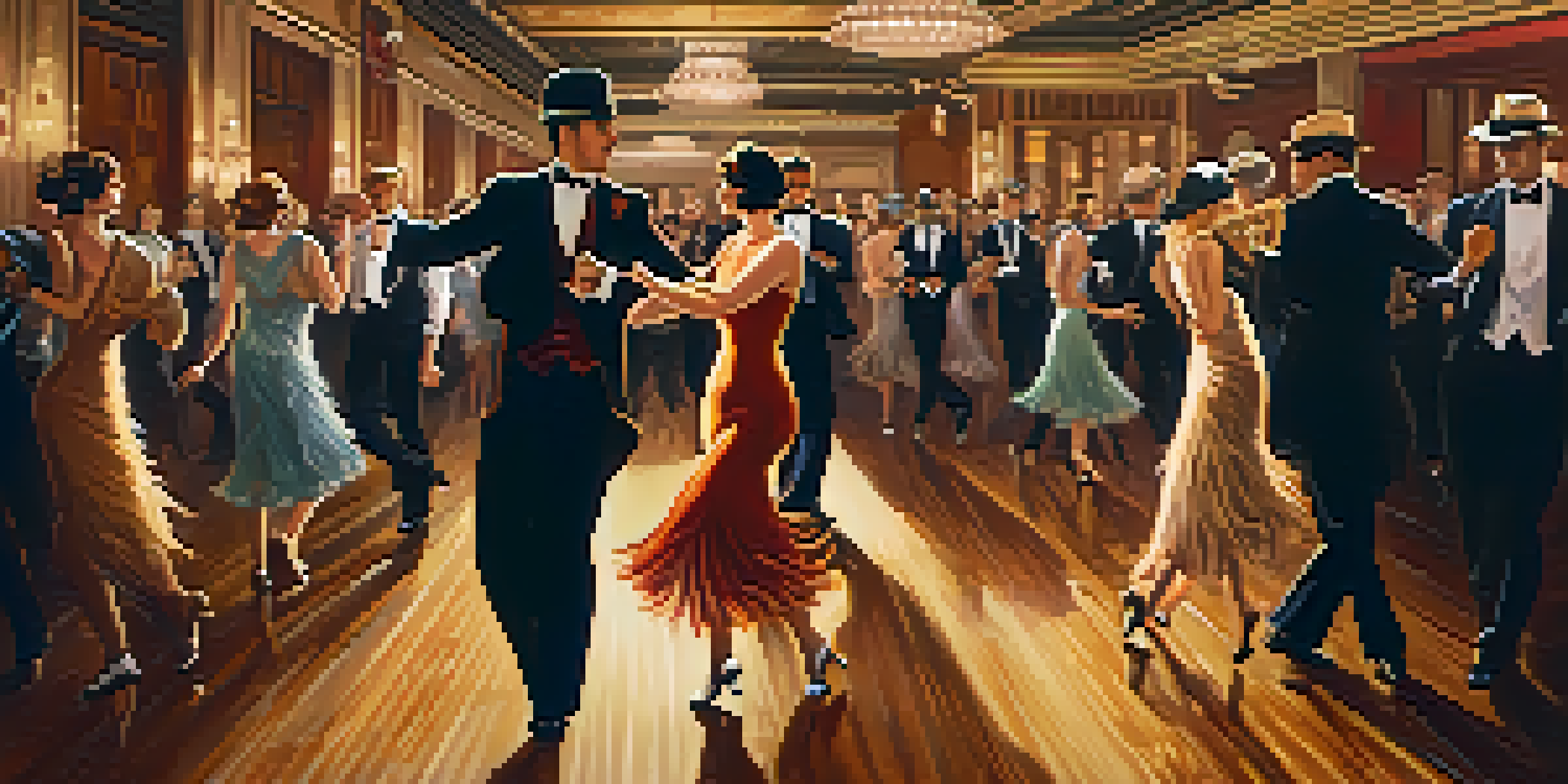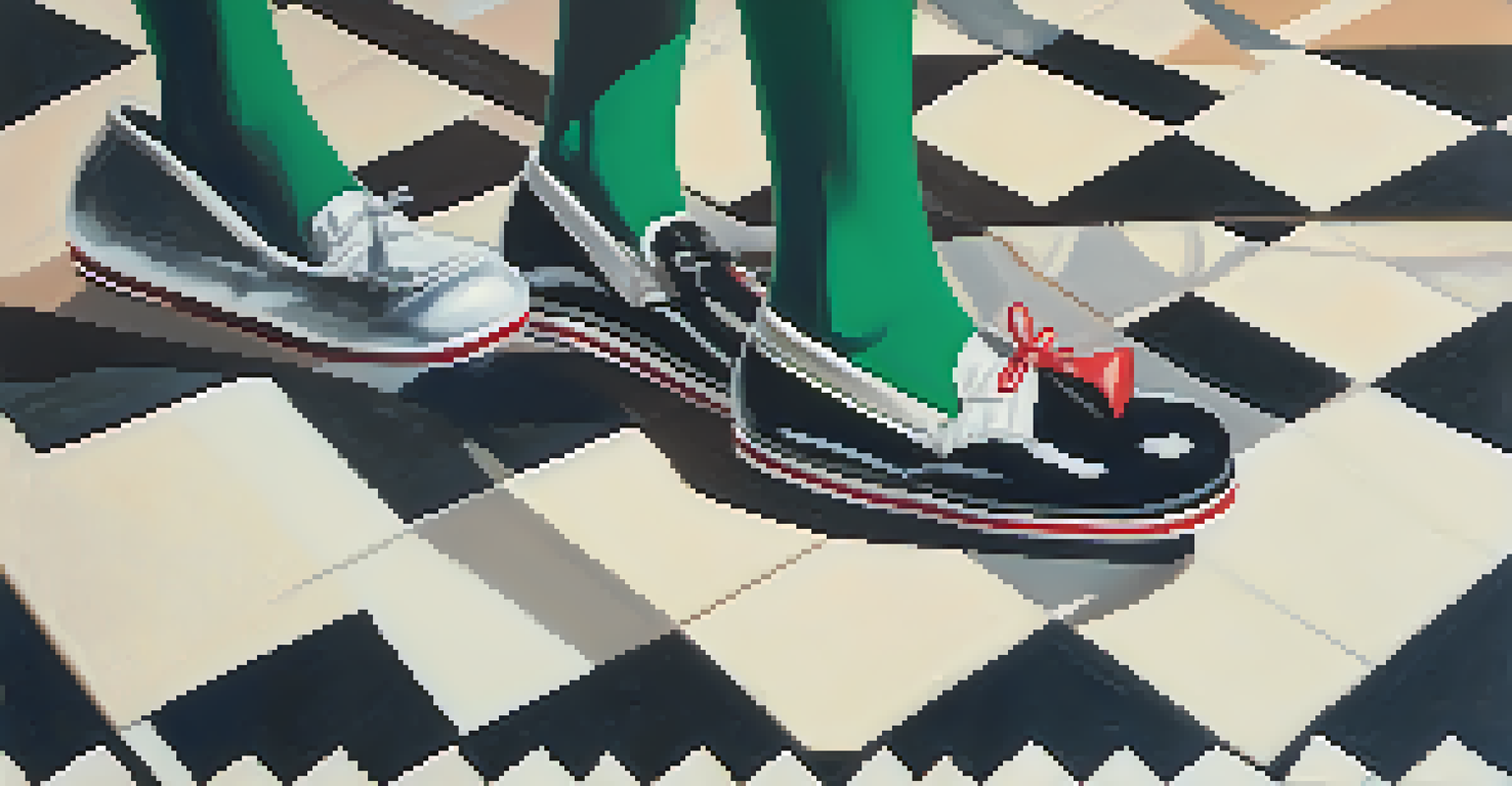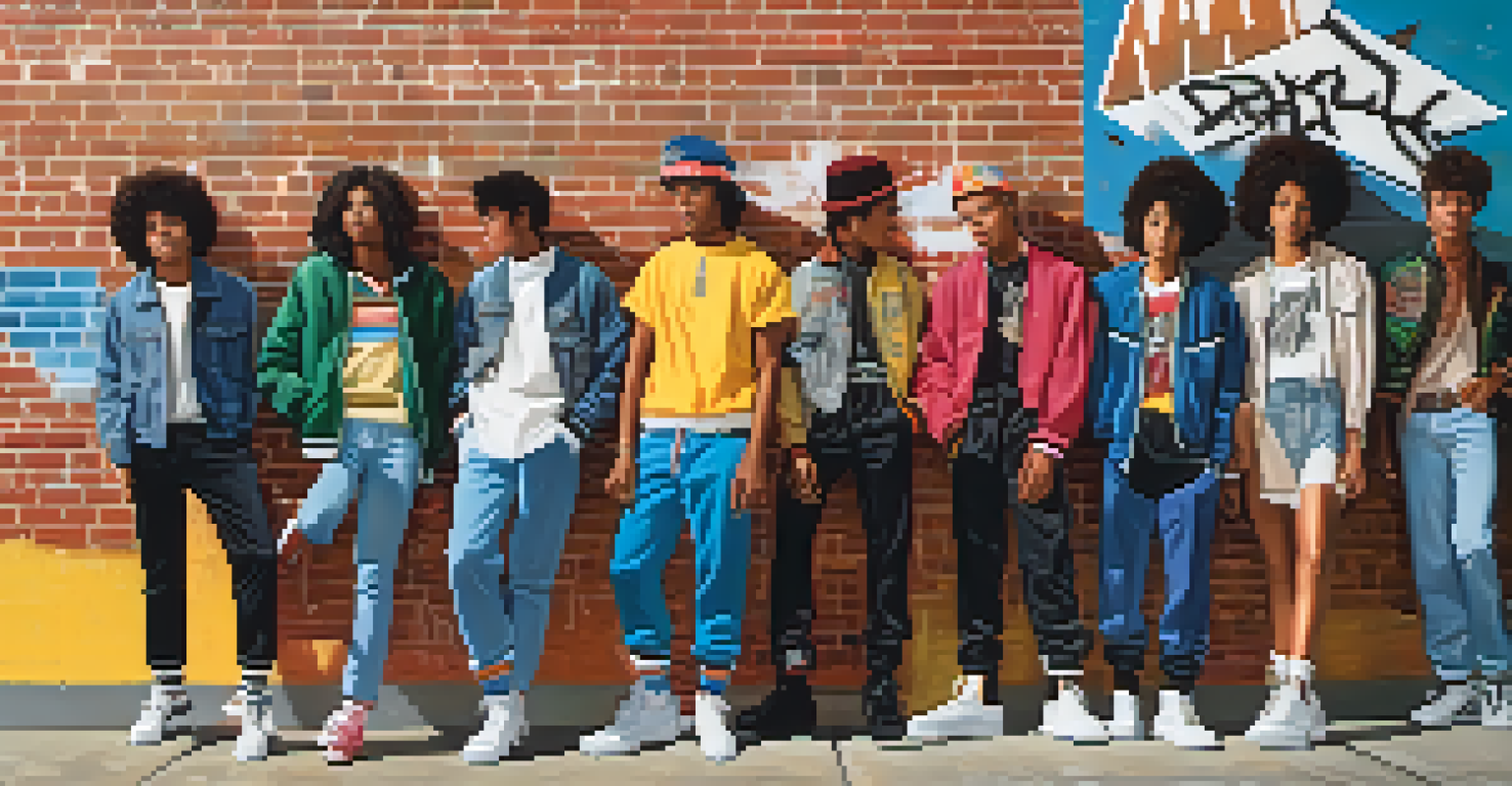Footwear Fashion Through the Decades: A Historical Journey

The Roaring Twenties: Glamour and Flappers
The 1920s marked a significant shift in fashion, with the emergence of flapper culture. Women began to embrace shorter hemlines and more practical footwear, such as Mary Janes, which allowed for freedom of movement while dancing the Charleston.
Fashion is the armor to survive the reality of everyday life.
Men's footwear also saw a transformation, with the advent of Oxford shoes and loafers that offered a sleek and polished look. The bold styles reflected the era's sense of liberation and rebellion against traditional norms.
Footwear during this decade was not just about function; it was a statement of style and identity, setting the stage for future fashion trends.
The 1930s: Elegance Meets Practicality
The 1930s brought a return to more elegant and refined styles, with high heels becoming increasingly popular. This era saw the rise of the stiletto, which symbolized sophistication and femininity.

During the Great Depression, practicality played a crucial role in footwear choices. Many opted for durable, affordable shoes that could withstand daily wear, yet still maintained a sense of style.
Footwear Reflects Cultural Shifts
Throughout the decades, footwear has evolved in style and function, mirroring societal changes and cultural movements.
As Hollywood glamorized fashion through film, shoes became a canvas for expressing personal style, setting the stage for a more diverse footwear market.
The 1940s: War and Utility
The 1940s were heavily influenced by World War II, which shifted the focus to utility and function in footwear. Women often wore sturdy platforms and sensible shoes, reflecting a practical approach to fashion during tough times.
Shoes transform your body language and attitude. They lift you physically and emotionally.
Despite the challenges, this decade also introduced stylish variations like peep-toe shoes, which blended functionality with flair, allowing women to express their individuality.
The end of the war sparked a renewed interest in fashion, paving the way for more extravagant designs and a return to elegance in footwear.
The 1950s: Rock 'n' Roll and Youth Culture
The 1950s celebrated youth culture, and footwear became a key element of self-expression. Sneakers gained popularity among the younger generation, thanks to rock 'n' roll icons like Elvis Presley, who sported them on stage.
Classic styles like ballet flats and kitten heels emerged, catering to both casual and formal occasions. This decade showcased the revolution of fashion, where comfort met style.
Practicality Meets Style
From the practical designs of the 1940s to the glamorous styles of the 1920s, footwear has balanced utility and elegance across eras.
Moreover, the emergence of brands like Converse and Keds changed the way people viewed casual footwear, leading to a more diverse array of options.
The 1960s: Bold Statement Pieces
The 1960s were marked by vibrant colors and daring styles, with footwear reflecting the era's spirit of revolution. Knee-high boots and chunky heels became iconic, symbolizing the era's boldness and desire for change.
Designers like Mary Quant and André Courrèges pushed boundaries, creating footwear that was not just functional but also a piece of art. The mod culture embraced avant-garde styles, which influenced mainstream fashion.
This decade laid the groundwork for the future of footwear, where designers began to see shoes as essential elements of an outfit rather than mere accessories.
The 1970s: Platform Shoes and Disco Fever
The 1970s witnessed the rise of platform shoes, driven by the disco craze that took over dance floors. These towering styles became synonymous with the era, allowing wearers to stand out and express their individuality.
This decade also embraced diverse cultural influences, leading to the integration of styles like clogs and sandals into mainstream fashion. Comfort became a priority, and the '70s offered a variety of options for both men and women.
Rise of Sustainability in Fashion
In recent years, the footwear industry has increasingly focused on sustainability, reflecting consumers' growing awareness of ethical production.
The combination of bold colors, patterns, and materials reflected a free-spirited attitude, making footwear an essential part of the disco lifestyle.
The 1980s: Athletic Meets Fashion
The 1980s saw a fusion of athleticism and fashion with the rise of sneakers as a mainstream staple. Brands like Nike and Adidas became household names, and their stylish designs appealed to both athletes and fashion enthusiasts.
This decade also embraced bold aesthetics, with bright colors and unique patterns dominating the footwear scene. High-top sneakers, in particular, became a fashion statement, often worn with casual and even semi-formal attire.

The influence of pop culture icons and movies further propelled sneaker culture, establishing footwear as a key player in the fashion industry.
The 1990s to Today: Diversity and Sustainability
From the '90s to today, footwear fashion has become increasingly diverse, catering to various lifestyles and preferences. The rise of streetwear has popularized sneakers, while high-fashion designers have embraced them, blurring the lines between casual and formal.
Sustainability has also become a significant focus in recent years, with brands opting for eco-friendly materials and ethical production practices. Consumers are now more conscious of their choices, prompting a shift in the industry towards greener practices.
Today, footwear represents not just style but also values, as individuals seek to express their identity through their choices, making the journey of footwear fashion an exciting reflection of cultural evolution.